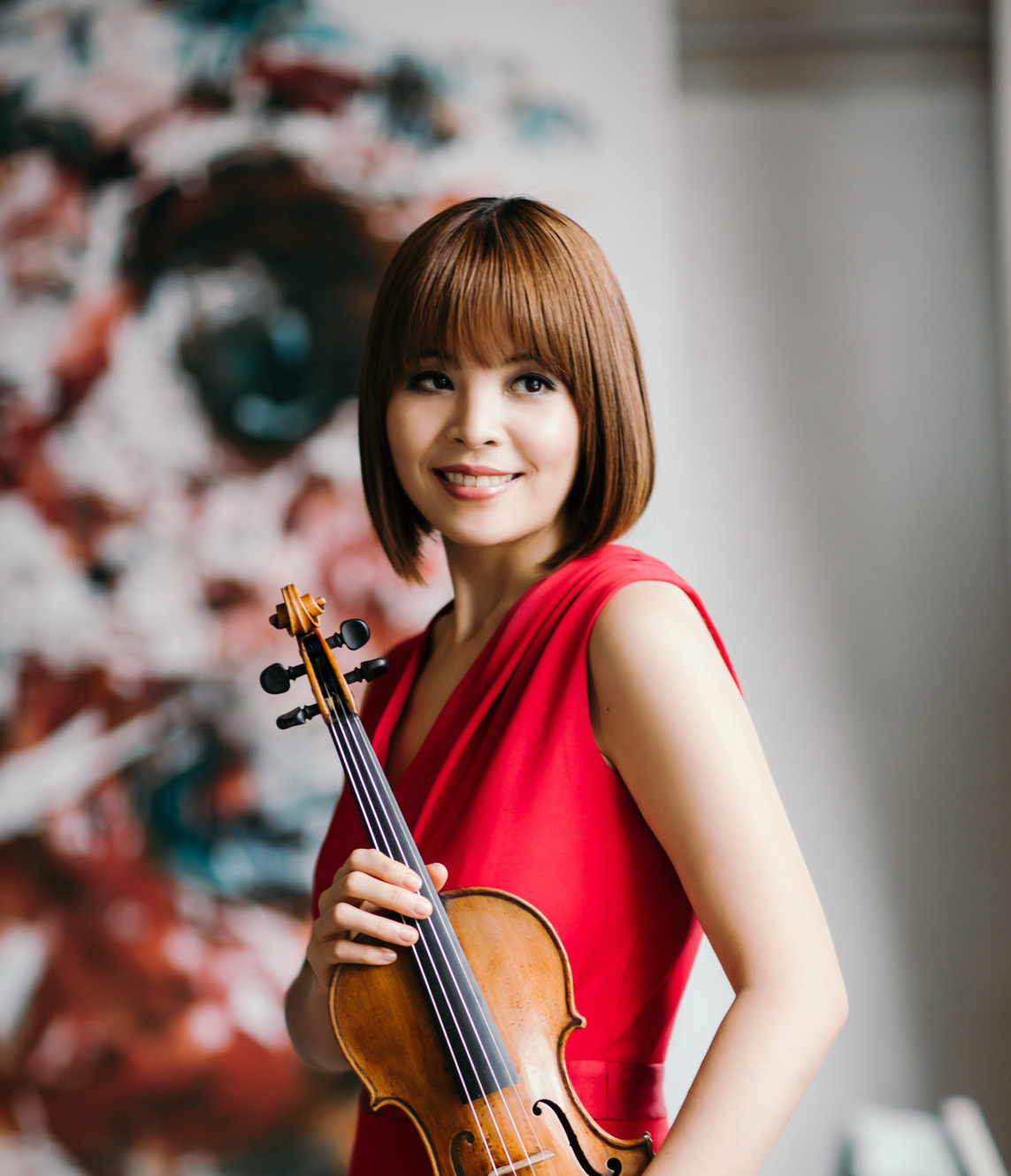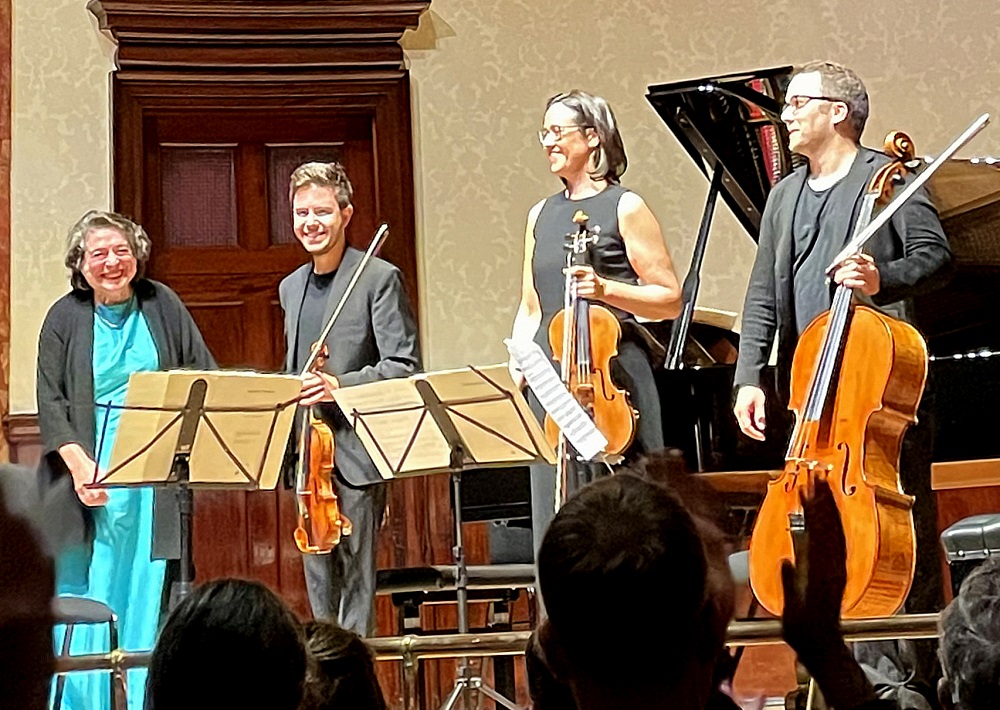Epic-lyric magician Brahms wears a very adaptable garment for certain masterpieces: black on the outside with fur trimming, reversible to show its exquisitely wrought, variegated silk patterns on the inside.
For the celebrated G minor Piano Quartet and the First Piano Concerto – which Elisabeth Leonskaja has featured so impressively in concert with its successor – the darkness predominates, but the colours flash too. In the Second Concerto and Quartet, the bright reverse takes the lead. There can surely be no team more adaptable to all the miracles than Leonskaja and members of the Staatskapelle String Quartet of Berlin.
 These are players from Barenboim’s Berlin opera orchestra, and lined up for chamber music with the (equal) best at his suggestion. Konzertmeister(in) Jiyoon Lee (pictured right by Zuzanna Specjal) joined three of the original quartet, taking Wolfgang Brandl’s place in the A major Quartet. The tone is as radiantly beautiful as any violinist’s I’ve heard, a match for the darker singing voices of viola player Yulia Deyneka and cellist Claudius Popp. Kryysztof Specjal led the G minor in the second half, slimmer soundwise but unsurprisingly fine-tuned to his regular colleagues. It was inevitable, perhaps, that the dazzling “gypsy rondo” of No. 1 should bring down the curtain, and the house, but I’d have preferred No. 2 to appear in order, since it’s the richer work.
These are players from Barenboim’s Berlin opera orchestra, and lined up for chamber music with the (equal) best at his suggestion. Konzertmeister(in) Jiyoon Lee (pictured right by Zuzanna Specjal) joined three of the original quartet, taking Wolfgang Brandl’s place in the A major Quartet. The tone is as radiantly beautiful as any violinist’s I’ve heard, a match for the darker singing voices of viola player Yulia Deyneka and cellist Claudius Popp. Kryysztof Specjal led the G minor in the second half, slimmer soundwise but unsurprisingly fine-tuned to his regular colleagues. It was inevitable, perhaps, that the dazzling “gypsy rondo” of No. 1 should bring down the curtain, and the house, but I’d have preferred No. 2 to appear in order, since it’s the richer work.
Although these first two piano quartets were composed in the same year, 1861, and accumulate reams of thematic inspiration fit for a dozen such works, the second seems way ahead in terms of fluidity, surprises and dialogues between pianist and the three string players. The flow seems like a spontaneous act in the first-movement exposition, its repeat doubly welcome with a softer grain from Leonskaja on the return of the opening calm. In the slow movements of both quartets, Brahms and the performers hit the emotional nail on the head with the very first phrase – does any other composer manage this in the same way? – before launching surprises on us: the victory march of No. 1’s Andante con moto, wittily sprung by Leonskaja before putting on its full military garb, the mystery arpeggios of No. 2 which get so magical a final answer at the end of the Poco adagio.
 Sleight of hand is Brahms’s prerogative, but it takes a chamber ensemble of this supreme sophistication to make it sound so fresh and new: the sudden cut-offs, the serious innards of the otherwise urbane Second Quartet finale, the hilarious quick changes of the First’s tziganery; though the players kept straight faces for this, the humour was all there, the final flash brilliant almost beyond belief. Above all, though she never dominates, Leonskaja (pictured above by Charlotte Connal at the end of the concert with Specjal, Deyneka and Popp) has to be Brahms's best earthly representative right now, moving from absolute clarity of thunder to supreme delicacy. I can hardly wait for the third instalment of the trilogy and the Piano Quintet in January.
Sleight of hand is Brahms’s prerogative, but it takes a chamber ensemble of this supreme sophistication to make it sound so fresh and new: the sudden cut-offs, the serious innards of the otherwise urbane Second Quartet finale, the hilarious quick changes of the First’s tziganery; though the players kept straight faces for this, the humour was all there, the final flash brilliant almost beyond belief. Above all, though she never dominates, Leonskaja (pictured above by Charlotte Connal at the end of the concert with Specjal, Deyneka and Popp) has to be Brahms's best earthly representative right now, moving from absolute clarity of thunder to supreme delicacy. I can hardly wait for the third instalment of the trilogy and the Piano Quintet in January.
- More Brahms from Leonskaja and the Staatskapelle String Quartet at the Wigmore Hall on 29 January 2023
- More classical reviews on theartsdesk














Add comment